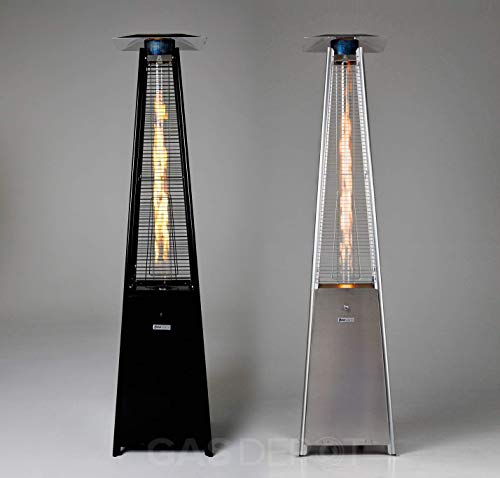Patio Heating Systems: A Simple Definition
Patio Heating Systems: A Comprehensive Guide
As outdoor home evolve into extensions of our homes, developing a comfortable and welcoming atmosphere is paramount. One of the most reliable methods to achieve this convenience is by executing patio heating systems. These systems permit families and friends to enjoy their outdoor areas year-round, despite the chill of the night air. This article will explore various patio heating systems readily available, their features, advantages, and important considerations for picking the ideal one.
Types of Patio Heating Systems
Patio heating unit can be found in various forms, each with its own distinct qualities. Below are some of the most common types:
Type
Description
Pros
Cons
Electric Patio Heaters
These heaters run using electricity and can be found in wall-mounted, portable, and freestanding models.
Easy to set up and use; immediate heat; safe; low upkeep
Minimal heat variety; might increase electricity costs
Gas Patio Heaters
Normally powered by propane or gas, gas patio heaters provide significant heat output and can cover big areas.
High heat output; can last longer than electric models; ideal for huge gatherings
Requires gas supply; can be less portable; security worry about gas leakages
Infrared Heaters
Infrared heaters produce thermal radiation that straight warms things and people rather than the surrounding air.
Efficient; instant heat; minimal heat loss; eco-friendly options readily available
Limited area of impact; preliminary expense may be high
Fire Pits
Frequently made from stone or metal, fire pits provide warmth and ambiance, producing a comfortable environment.
Natural ambiance; flexible (cooking choice); gather around for social interactions
Security dangers with open flame; require wood or propane supply
Patio Umbrellas with Heaters
These are umbrellas fitted with integrated heating aspects, perfect for shaded areas.
Hassle-free; combines shade and heating; portable
Less efficient in windy conditions; minimal area; can be expensive
Secret Features to Consider
When choosing a patio heating system, it is important to examine various features based upon individual choices, spending plan, and outdoor space requirements. Here are some aspects to think about:
Heating Capacity: Measured in BTUs (British Thermal Units), this figures out the heat output of the heater. Select a heater with adequate BTUs for your outdoor size.
Fuel Type: Decide between electrical, gas, or wood-burning options based on convenience, schedule, and effectiveness.
Mobility: If movement is important, search for lightweight or wheeled models for easy transport.
Upkeep: Consider the upkeep needed for each type. Electric heaters generally require less upkeep than gas or wood options.
Safety Features: Look for systems with safety cut-offs, protective screens, and products that can withstand outdoor conditions.
Advantages of Patio Heating Systems
Patio heating unit provide several advantages, making it possible for homeowners to optimize the use of their outdoor living areas. Some benefits include:
- Extended Outdoor Use: Heaters permit more time invested outside, even during cooler seasons.
- Increased Comfort: Provide a warm and welcoming environment for events, celebrations, or peaceful evenings.
- Enhanced Aesthetics: Many heater designs add a stylish touch to outdoor design.
- Increased Property Value: Homes with fully equipped outdoor spaces may attract higher value and appeal to potential purchasers.
- Versatile Options: With various design and styles readily available, there is a heating service for each sort of outdoor setting.
FAQs About Patio Heating Systems
1. How much does it cost to operate a patio heater?
- Electric Models: This depends upon the regional electricity rates and usage time. On average, running an electric heater can cost between ₤ 0.10 to ₤ 0.50 per hour.
- Gas Models: Propane expenses vary, but a 20-pound tank generally lasts about 8-10 hours, costing around ₤ 20-₤ 30 to fill.
2. Are patio heaters safe to utilize?
A lot of modern patio heaters are created with security functions. However, it's important to follow safety protocols, such as adhering to clearances from combustible items, using on steady surface areas, and ensuring appropriate ventilation for gas models.
3. Do patio heaters work in windy conditions?
The majority of patio heaters can offer warmth in light winds, however strong gusts can minimize their effectiveness and safety. For high-wind locations, think about more steady models or utilize wind shields.
4. Can I utilize a patio heater inside your home?
Utilizing outdoor heaters indoors is not advised due to carbon monoxide risks, particularly with gas heaters. Constantly confirm your heater's designated usage guidelines before installation.
5. How do I maintain my patio heating system?
Routine upkeep is important to ensure longevity and performance:
- For electric heaters, examine and clean the heating element frequently.
- Gas heaters need to have their gas lines examined for leaks and filters cleaned up.
- Fire pits should be cleaned after usage and inspected for any residue or ash buildup.
Patio heater play an important role in transforming outdoor spaces into comfy and welcoming environments. With a variety of options, each with unique advantages and functions, property owners can select the best system based upon their needs, choices, and specific outdoor conditions. By buying a reliable patio heater, one can optimize pleasure of their outdoor space throughout the year. Whether hosting summer barbecues or cozying up on cool evenings, a warmed patio welcomes togetherness, relaxation, and pleasure, making it an important addition to any home.
